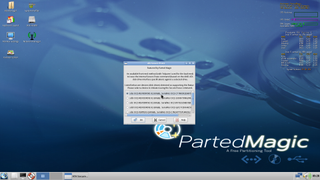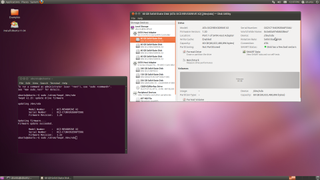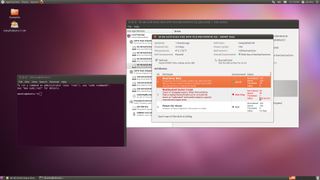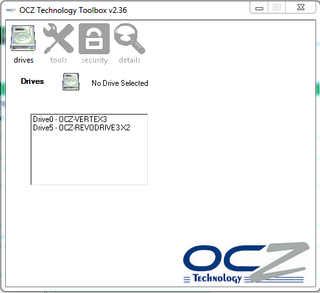The OCZ RevoDrive 3 X2 Preview: Second-Gen SandForce Goes PCIe
An Aside: Secure Erase? Firmware Update? It Can Be Done
Enthusiasts are all about control. For early adopters of the RevoDrive and RevoDrive X2, almost exclusively enthusiasts, the challenges of updating firmware and secure erasing are particularly frustrating. In many cases, secure erasing a drive is the only way to restore it to the original factory condition. And firmware updates are important in the same way that a motherboard BIOS upgrade can make or break a platform's usefulness. Sometimes those updates solve series issues. Other times they improve performance. In either case, you want the flexibility to do both.
The RevoDrive and RevoDrive X2 do support both capabilities. However, both processes can only be accomplished with a Live CD distro of Linux and a basic understanding of Unix commands.



In the case of secure erasing, you need to use the wipe command in terminal to erase each member of the striped array (two on the RevoDrive and four on the RevoDrive X2). If you're not Unix-savvy, the only other alternative is to use the GUI provided in Parted Magic. Of course, in order to do so, you should break the stripe prior to performing the procedure.

Unfortunately, there is no easy GUI option for updating a RevoDrive's firmware. The process is limited to terminal. But first, download OCZ's Linux Update Tool to your Live CD distro and find the device ID of each array member. The update process involves issuing the update command on each SSD array, sudo [fwupd location] /dev/sh? (replace ? for the drive ID).


The very good news is that OCZ makes secure erase and firmware updates much easier on the RevoDrive 3 X2. You only need to download OCZ's Toolbox tool. The drive pops up just like a familiar SATA-based SSD. And, since OCZ creates the equivalent of a unified stripe, there's only one logical drive to deal with.

Stay on the Cutting Edge
Join the experts who read Tom's Hardware for the inside track on enthusiast PC tech news — and have for over 25 years. We'll send breaking news and in-depth reviews of CPUs, GPUs, AI, maker hardware and more straight to your inbox.
Current page: An Aside: Secure Erase? Firmware Update? It Can Be Done
Prev Page Addressing RevoDrive X2's Shortcomings And Improving RevoDrive 3 Next Page Test Setup-
warmon6 ReplyIt's not a business-class product. It's for the power user who is able to tax it using the right workload. If you're not one of those folks, the RevoDrive 3 X2 is seriously overkill.
OVERKILL?!?!
Nothing is overkill in the computer arena in terms of performance. :p
Just the price can be over kill. o.0 -
acku Santa is going to need a bigger expense account... :)Reply
Personally, I'm hoping that OCZ adds TRIM prior to September.
Cheers,
Andrew Ku
TomsHardware.com -
greenrider02 I saw defense of the Vertex 3's occasional low numbers, but no mention of the solid (and sometimes better) performance that the cheaper and more miserly Crucial m4 showed throughout your tests.Reply
Perhaps you have some bias towards the Vertex 3 that needs reconsideration?
Other than that, $700 seems like a fair price when considering the performace difference, especially if utilized properly, for instance as a high traffic web/corporate server -
acku greenrider02I saw defense of the Vertex 3's occasional low numbers, but no mention of the solid (and sometimes better) performance that the cheaper and more miserly Crucial m4 showed throughout your tests.Perhaps you have some bias towards the Vertex 3 that needs reconsideration?Other than that, $700 seems like a fair price when considering the performace difference, especially if utilized properly, for instance as a high traffic web/corporate serverReply
If you read the first page then you know that I give a nod to Vertex 3s as the fastest MLC based 2.5" SSD. I consider that plenty of love. :).
We'll discuss the lower capacity m4s in another article. FYI, I suggest that you read page 5 and page 6. We are not testing FOB. We are testing steady state. That's part of the reason the SF-based drives are behaving differently with incompressible data.
On your second point, this is in no way targeted toward an enterprise environment (that's what Z-drives are for). There is no redundancy in the array if a single SF controller fails. The whole card is a dud afterward. You can add higher level redundancy, but enterprise customers have so far been nervous on SandForce products. Plus, there's a general preference for hardware vs. software redundancy. (That's them talking not me). Overall, this makes it unacceptable for any enterprise class workload.
Most Popular

